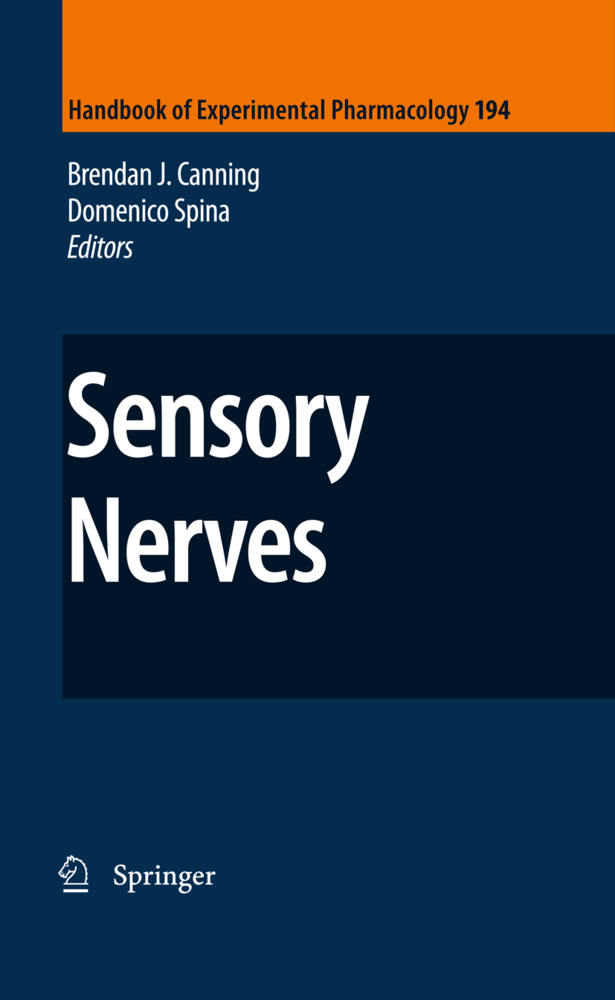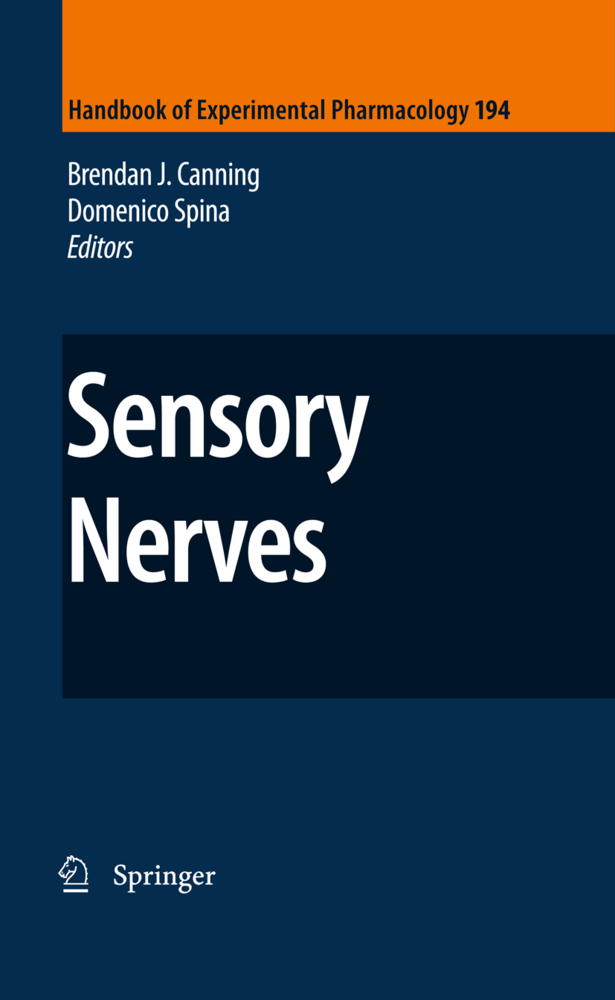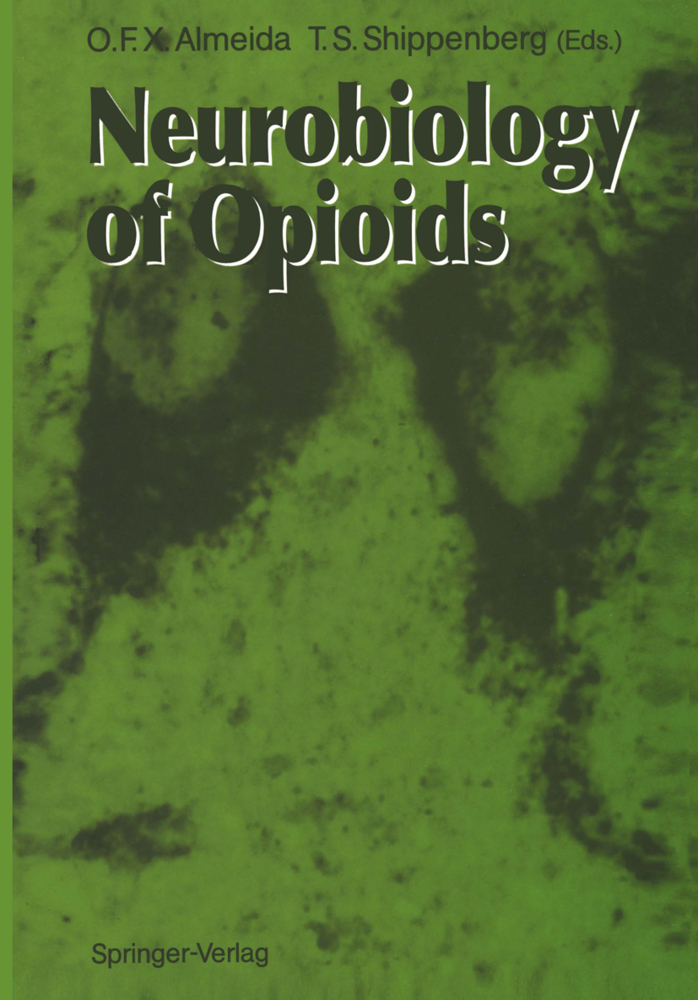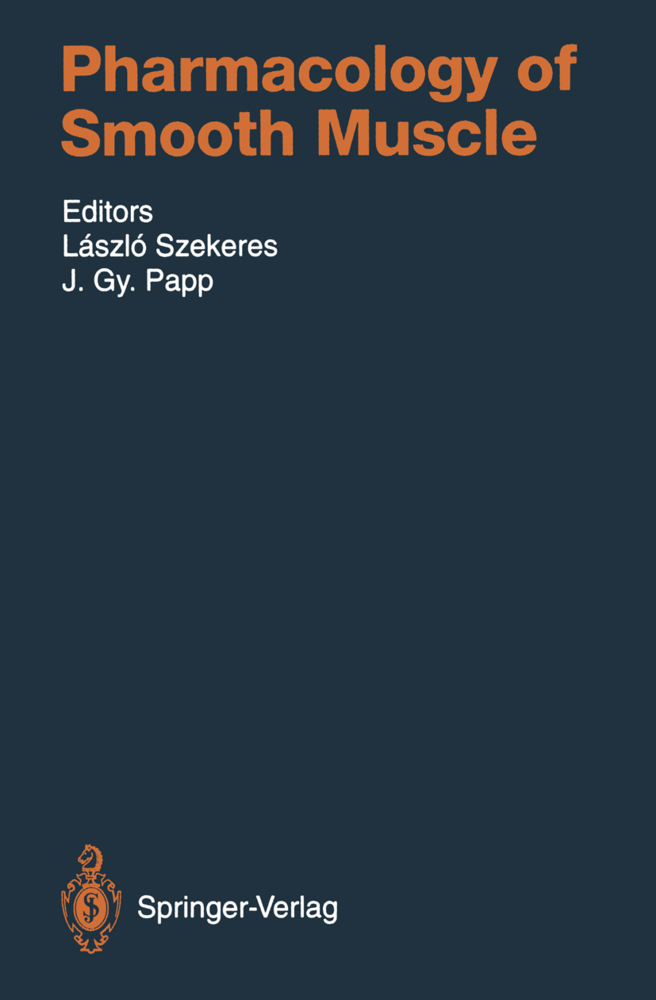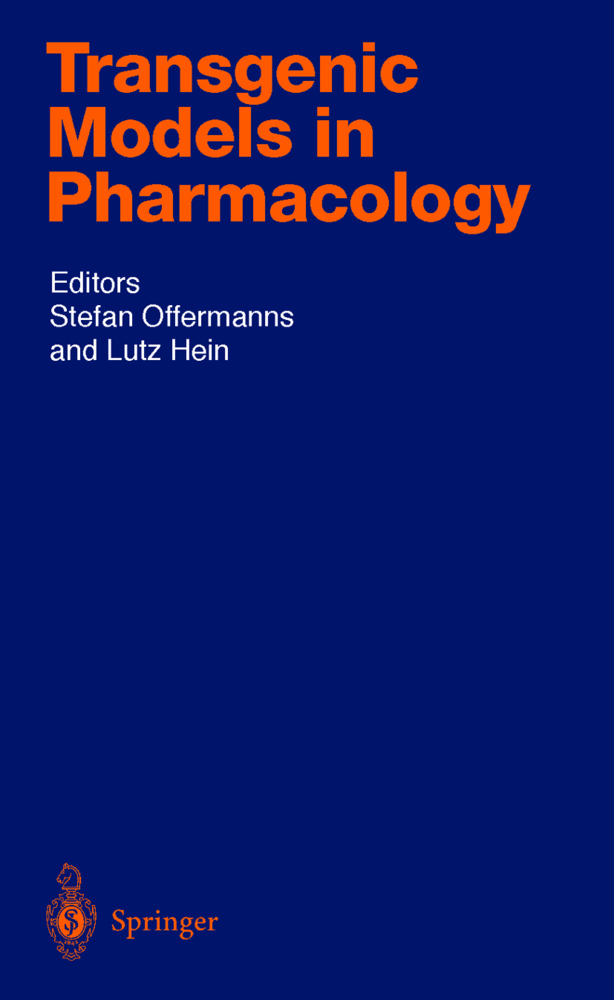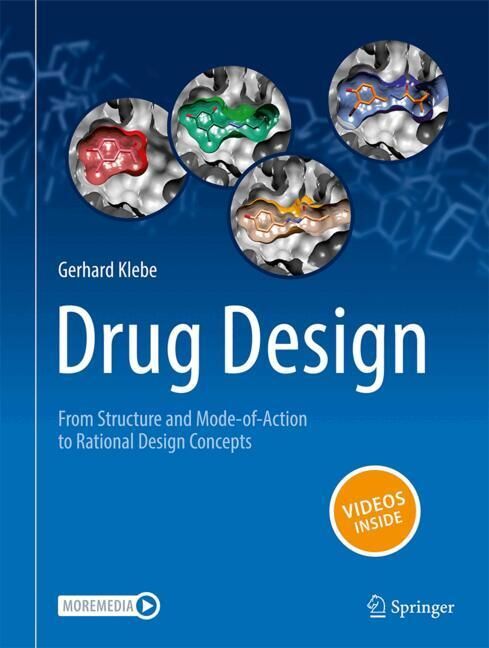Theintentionofthisbookistoprovideacomprehensiveandcontemporaryreview ofthebiologyofsensorynerves. InkeepingwiththethemeoftheHandbookof Experimental Pharmacology series, emphasis will be placed on the actions of drugs,transmittersandautacoidsthatinitiateorinhibitsensorynerveactivation (through actionsonionchannelsandreceptorsattheirperipheralterminals)or modulate the release or actions of the transmitters released from the central terminalsofsensorynerves. Onthebasisofextensivesupportiveevidenceinthe literature, it is our view that many diseases are characterized by alterations in sensorynervefunction(e. g. pain,cardiovasculardiseaseandmigraine). Itisour beliefthatthisbookwillbeunique,asitwillcomprehensivelycovertheroleof sensory nerves across many therapeutic areas. To address directly one of the editorialboardqueries,thisisnotintendedtobeabookaboutthepharmacology ofpain. Thatsaid,tomostpharmacologists,painisthemostobviousindicationfor aroleorsensorynervesindisease. Webelievethatthelessonslearntfromthestudy ofneuropathicpainwillbeinvaluableforresearchersintheothertherapeuticareas covered inthisvolume. Sincemostinterest hasfocusedontheroleofsensory nervesinneuropathicpain,wehaveaddedanumberofchaptersdevotedtothis subject. Thebookisorganizedinthreeparts,coveringthetypesandrolesofsensory nervesinsomaticandvisceraldisorders(PartI),speci?ctargetsonsensorynerves relevanttopainandvisceraldisorders(PartII)andadescriptionofcurrentand futuretherapeuticstrategiesfortargetingsensorynerves(PartIII). The?rsttwochaptersinPartIaredevotedtodescribingtheclinicalfeaturesof neuropathicpainandvisceralpain. Ourintentionisfortheauthorstoprovidea clinicalviewpointonthefeaturesoftheseconditionsandtheadvantages/disadv- tagesofcurrenttreatmentmodalities. Thenext?vechaptersinPartIfocusonthe roleofsensorynervesinotherpathologicalconditions. Severalcommonthemes willemergeinthispart,includingthemodeofsensorynerveactivationinvarious tissues and organs, the alterations in sensory nerve excitability associated with disease,andtheimportanceofin?ammationandin?ammatorymediatorsininiti- ingalteredsensorynervefunctionindisease. v vi Preface Whilstthe?rstpartfocusesontheclinicaland/orsystemsphysiology,PartIIhas itsfocusatthecellandmolecularlevel. Thisparthighlightsthecurrentundersta- ingofproteins/ionchannels/mediatorsthathavecreatedthemostintenserecent interestintheareaofsensorynervebiology. Together,thesechapterswillgivethe reader important knowledge about how sensory nerve function can be altered pharmacologically. Thelastchapterinthispartdescribestheprocessesthatgive risetoalteredneuralre?exesatthecentrallevel. Themechanismsdescribedin thesechaptersreinforcetheroleofproteins/mediatorshighlightedinthepreceding chapters. Theroleofthesecellular,molecularandphysiologicalprocessesinthe diseasesdiscussedinPart1areemphasized. TheaimofPartIIIistohighlightpotentialdrugtargetsthatmightaltersensory nervefunction. Mostoftheworkhasbeendevotedtothetreatmentofneuropathic painandsothispartheavilyemphasizesthissubject. However,aswillbeapparent fromPartI,manyofthesetargetscouldbeutilizedinothertherapeuticareasthat implicatesensorynervesintheirpathophysiologicalprocesses. Thefocusofthe chaptersisonopioidsandmodulatorsofionchannelsandthenthe?nalchapteris devotedtofuturetreatmentstrategiesforneuropathicpain. Finally,wewouldliketothankallthecontributors,includingco-authors,who agreedtowritechaptersforthisbookandthepublishers,especiallySusanneDathe, fortheirpatienceandassistance. Baltimore B. J. Canning London D. Spina Contents PartI RoleofSensoryNervesinDisease NeuropathicPain:AClinicalPerspective . . . . . . . . . . . . . . . . . . . . . . . . . . . . . . . . . . . . . 3 RalfBaron VisceralPain:TheNeurophysiologicalMechanism. . . . . . . . . . . . . . . . . . . . . . . . . . 31 JyotiN. Sengupta Migraine . . . . . . . . . . . . . . . . . . . . . . . . . . . . . . . . . . . . . . . . . . . . . . . . . . . . . . . . . . . . . . . . . . . . . . . . . 75 SilviaBenemei,PaolaNicoletti,J
Visceral Pain: The Neurophysiological Mechanism
Migraine
Afferent Nerve Regulation of Bladder Function in Health and Disease
Sensory Nerves and Airway Irritability
Regulation of Cardiac Afferent Excitability in Ischemia
Roles of Gastro-oesophageal Afferents in the Mechanisms and Symptoms of Reflux Disease
Cell and molecular mechanisms regulating sensory nerve function
Transient Receptor Potential Channels on Sensory Nerves
Acid-Sensitive Ion Channels and Receptors
Purines and Sensory Nerves
Sensory-Nerve-Derived Neuropeptides: Possible Therapeutic Targets
Cytokine and Chemokine Regulation of Sensory Neuron Function
The Role of Peptides in Central Sensitization
Current and Future treatment strategies targeting sensory nerves
Opioids and Sensory Nerves
The Pharmacology of Voltage-Gated Sodium Channels in Sensory Neurones
Role of Calcium in Regulating Primary Sensory Neuronal Excitability
Future Treatment Strategies for Neuropathic Pa.
Role of sensory nerves in disease
Neuropathic Pain: A Clinical PerspectiveVisceral Pain: The Neurophysiological Mechanism
Migraine
Afferent Nerve Regulation of Bladder Function in Health and Disease
Sensory Nerves and Airway Irritability
Regulation of Cardiac Afferent Excitability in Ischemia
Roles of Gastro-oesophageal Afferents in the Mechanisms and Symptoms of Reflux Disease
Cell and molecular mechanisms regulating sensory nerve function
Transient Receptor Potential Channels on Sensory Nerves
Acid-Sensitive Ion Channels and Receptors
Purines and Sensory Nerves
Sensory-Nerve-Derived Neuropeptides: Possible Therapeutic Targets
Cytokine and Chemokine Regulation of Sensory Neuron Function
The Role of Peptides in Central Sensitization
Current and Future treatment strategies targeting sensory nerves
Opioids and Sensory Nerves
The Pharmacology of Voltage-Gated Sodium Channels in Sensory Neurones
Role of Calcium in Regulating Primary Sensory Neuronal Excitability
Future Treatment Strategies for Neuropathic Pa.
Canning, Brendan J.
Spina, Domenico
| ISBN | 978-3-540-79089-1 |
|---|---|
| Artikelnummer | 9783540790891 |
| Medientyp | Buch |
| Copyrightjahr | 2009 |
| Verlag | Springer, Berlin |
| Umfang | XII, 624 Seiten |
| Abbildungen | XII, 624 p. |
| Sprache | Englisch |

